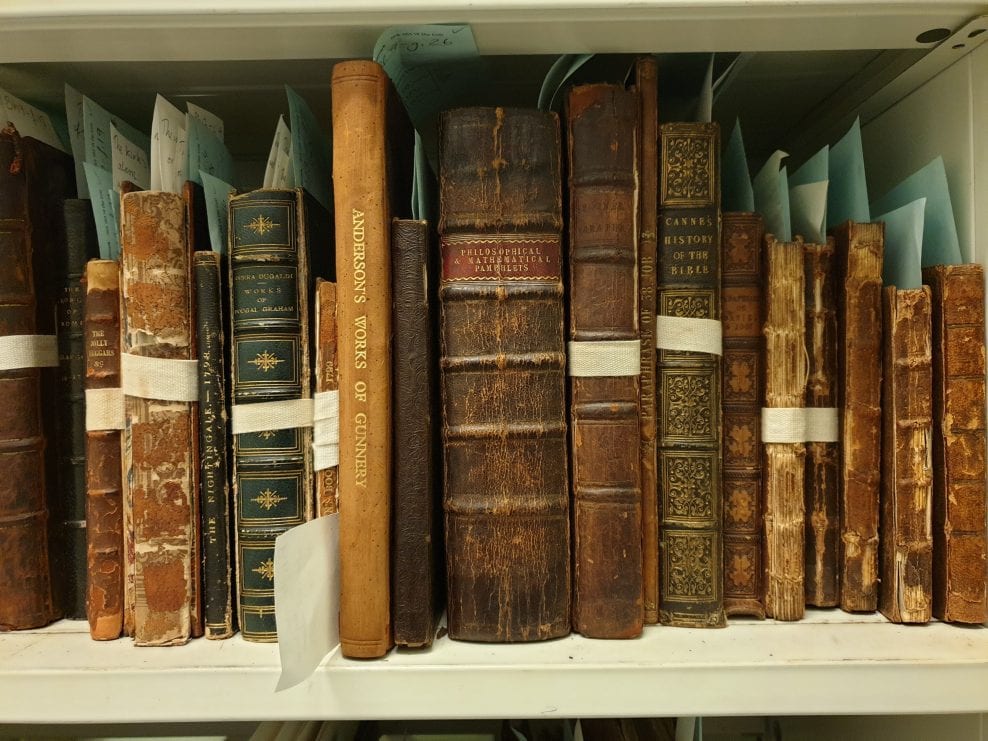Projects
University of Glasgow Special Collections digitisation survey
As part of an on-going digitisation of the Eighteenth Century Collections Online, the University commissioned a survey of 419 selected pamphlets and broadsheets, many bound with others in books and others in folders. The aims were to ensure that the material was stable enough to be digitised and, if not, to calculate the cost and timing of any necessary cleaning and repairs.
With input from the library team, I was able to put together a spreadsheet pre-populated with bibliographical data, including shelfmarks, which saved a lot of time and meant that the information tallied with the data in the catalogue. Any conservation survey shows up anomalies in a catalogue, so the double checking of information by staff and me was helpful in the long term.
I worked in the Reading Room and the material was brought to me each day. The project was complicated by the fact that although other members of the library team were available and able to provide some help, due to the absence of some key staff due to industrial action, I was unable to get answers to some important questions that arose during the survey while on site. I was able to improvise as I went along and then have a discussion with the special collections team after I had left the site. Much of the information I required had to do with the details of the digitisation process, e.g. the angle of opening, the curve of the gutter or whether or not further damage to the structure of an already badly-damaged volume was acceptable.
I used colour coding in the spreadsheet to help identify books with particular types of damage and repairs were divided into the following categories:
- Essential stabilisation: cleaning and/or repairs without which damage would ensue during digitisation
- Optional stabilisation: superficial cleaning and minor repairs unlikely to become worse during digitisation
- Major repairs, optional: An example being a bound volume with detached boards
- Major repairs, essential: An example might be a bound book with an important binding but a textblock splitting in half that could not be allowed to deteriorate further, but there were no books in this category.
Stabilisation was costed by the minute and major repairs by the day.
The items were each given a joint condition and stability rating, as rating an item’s condition without considering its stability is rarely of any use; the categories were:
1 = Good/stable
2 = Fair/slightly unstable
3 = Poor/highly unstable


